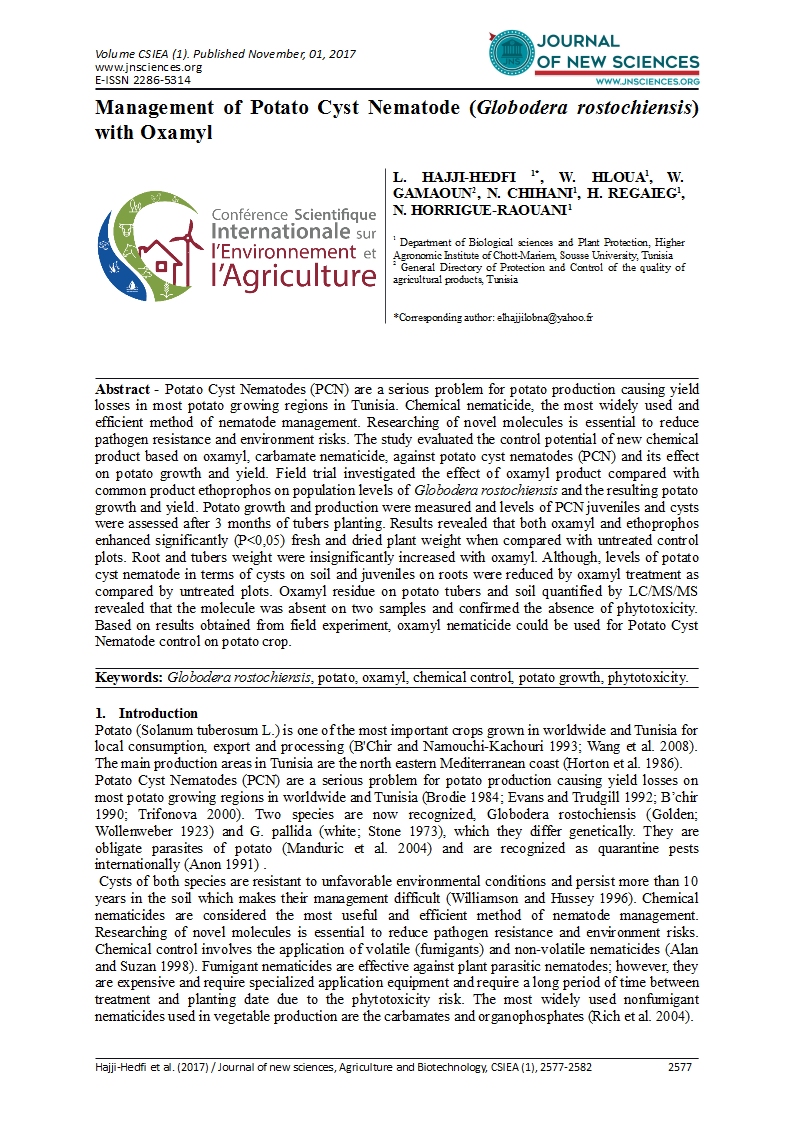- Category: Volume spécial (Conférence CSIEA 2017)
- Hits: 10703
Management of Potato Cyst Nematode (Globodera rostochiensis) with Oxamyl

|
|
L. HAJJI-HEDFI 1*, W. HLOUA1, W. GAMAOUN2, N. CHIHANI1, H. REGAIEG1, N. HORRIGUE-RAOUANI1
1 Department of Biological sciences and Plant Protection, Higher Agronomic Institute of Chott-Mariem, Sousse University, Tunisia 2 General Directory of Protection and Control of the quality of agricultural products, Tunisia
|
Abstract - Potato Cyst Nematodes (PCN) are a serious problem for potato production causing yield losses in most potato growing regions in Tunisia. Chemical nematicide, the most widely used and efficient method of nematode management. Researching of novel molecules is essential to reduce pathogen resistance and environment risks. The study evaluated the control potential of new chemical product based on oxamyl, carbamate nematicide, against potato cyst nematodes (PCN) and its effect on potato growth and yield. Field trial investigated the effect of oxamyl product compared with common product ethoprophos on population levels of Globodera rostochiensis and the resulting potato growth and yield. Potato growth and production were measured and levels of PCN juveniles and cysts were assessed after 3 months of tubers planting. Results revealed that both oxamyl and ethoprophos enhanced significantly (P<0,05) fresh and dried plant weight when compared with untreated control plots. Root and tubers weight were insignificantly increased with oxamyl. Although, levels of potato cyst nematode in terms of cysts on soil and juveniles on roots were reduced by oxamyl treatment as compared by untreated plots. Oxamyl residue on potato tubers and soil quantified by LC/MS/MS revealed that the molecule was absent on two samples and confirmed the absence of phytotoxicity. Based on results obtained from field experiment, oxamyl nematicide could be used for Potato Cyst Nematode control on potato crop.
Keywords: Globodera rostochiensis, potato, oxamyl, chemical control, potato growth, phytotoxicity.
